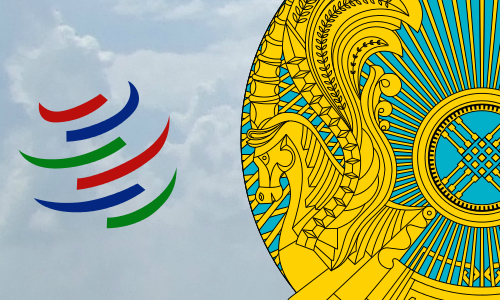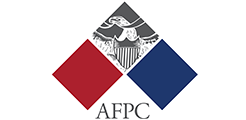Bishkek and Tashkent Face Uneasy Relations
By Arslan Sabyrbekov (06/24/2015 issue of the CACI Analyst)
On June 10, Kyrgyzstan marked the fifth anniversary of the tragic inter-ethnic violence that claimed more than 400 lives, displaced tens of thousands of people and destroyed thousands of households. In the aftermath of the bloody events, the President of neighboring Uzbekistan, Islam Karimov, issued a statement that third forces provoked the clashes between Kyrgyz and Uzbeks, and the Kyrgyz leadership agreed. However, recent developments indicate that Karimov’s position vis-à-vis the authorities in Bishkek and the conflict has changed into a more confrontational stance.
Karimov’s changing mood became apparent after his remarks to his Kyrgyz counterpart at the informal summit of the CIS states held in Moscow on May 8, in connection with the celebration of the 70th anniversary of the victory against Nazi Germany. At the summit, Kyrgyzstan’s President Almazbek Atambayev stated that, “It is of course sad that not everybody could make it to this summit because, to some extent, it is a tribute and respect for fathers and grandfathers, mothers and grandmothers who were in the war. I think that this day should remain in the memory of all countries because the future will punish those who forget the past.”
In response to this statement, the Uzbek President said that every democratically elected leader is in a position to decide what to celebrate and where, and no one has the right to force his opinion on others. Karimov continued by referring to his Kyrgyz colleague as simply “Almaz” and described his statements as incorrect and tactless. Atambayev interfered, stating that he was simply expressing his opinion, but Karimov ironically interrupted him by saying, “We all know your opinion already.”
Nevertheless, during his bilateral talks with the United Nations’ Secretary General Ban Ki-moon, Karimov described the June 2010 events in southern Kyrgyzstan as a full-scale war. “Power holders in Kyrgyzstan did not draw any conclusions. The causes of the conflict need to be investigated at an international level,” Karimov noted, despite the fact that the inter-ethnic clashes were investigated by a national as well as an international commission led by the Organization for Security and Cooperation in Europe. This is in stark contrast to the Andijan massacre of 2005, which were never evaluated either by national or international commissions.
Yet Karimov touched on a weak spot by pointing to Kyrgyzstan’s failure to bring the perpetrators to justice. Well-respected international human rights organizations have also called on the Kyrgyz authorities to retry all those convicted following the June 2010 inter-ethnic clashes, a trial that according to them saw ethnic Uzbeks sentenced at a higher proportion that then their Kyrgyz counterparts. Such a retrial would involve the case of the human rights defender and ethnic Uzbek Azimjan Askarov, sentenced to life for organizing mass disturbances and instigating inter-ethnic violence in southern Kyrgyzstan in 2010. According to Rachel Denber of Human Rights Watch, “In the case of Azimjan Askarov, the Kyrgyz justice system has utterly failed to deliver justice. The case was riddled with blatant flaws from start to finish, and it is astounding that the court did not order a thorough investigation into the way it was conducted.”
In general, Bishkek-Tashkent relations have always been uneasy. The two countries have been divided not only over the ethnic clashes between Uzbeks and Kyrgyz in southern Kyrgyzstan, but also on numerous border conflicts and the constant struggle for water resources. According to local political analysts, Karimov’s increasingly critical statements addressed to Bishkek might be guided by geopolitical interests. In a number of interviews, Uzbekistan’s president has stated that Tashkent will not enter the Eurasian Economic Union, the Customs Union or any other alliance that is reminiscent of the Soviet Union, unlike Bishkek, which is pursuing the opposite foreign policy.
Also, earlier this year Kyrgyzstan approved the sale of its gas network to Russia’s Gazprom for the symbolic price of US$ 1 and is now receiving its energy supplies without any delay. This has removed Tashkent’s leverage, which it has previously deployed to bully Bishkek by cutting off supplies during winter. Such developments, along with Bishkek re-equipping its military with the Kremlin’s assistance might are indeed irritants to power holders in Tashkent.
Armenia and Iran Hold Political Consultations
By Erik Davtyan (06/24/2015 issue of the CACI Analyst)
In June 2015, Armenia and Iran held numerous talks on political and economic cooperation, energy security, and the Nagorno-Karabakh peace process. On June 10, Armenia’s ambassador to Iran, Artashes Tumanyan, met with Alaeddin Boroujerdi, the chairman of the Committee for Foreign Policy and National Security of Iran’s Islamic Consultative Assembly (parliament). Boroujerdi welcomed the fact that Armenia and Iran pursue a high-level political dialogue and successfully cooperate at the level of parliaments, emphasizing the unique role of the Armenian Diaspora in Iran’s development. In turn, Ambassador Tumanyan stressed the importance of deepening political dialogue and economic exchange and expressed his gratitude to Iranian authorities for the warm attitude towards Iranian Armenians and the preservation of Armenian cultural heritage in Iran. Touching upon the current turmoil in the Middle East and security issues, the Armenian ambassador stated that all regional issues should be solved only by political means and that Armenia runs a constructive and balanced policy in this context.
The official political dialogue between the two neighboring states continued in the following days in Yerevan. On June 11, the President of Armenia’s National Assembly Galust Sahakyan received the head of the Friendship Group Armenia-Iran Ali Qaidi and other members of the group. The parties discussed the Nagorno-Karabakh peace process, as well as issues related to Armenia’s accession to the Eurasian Economic Union (EEU), parliamentary cooperation and especially the activity of the Friendship Group. On June 12, Iranian members of the Friendship Group were received by Armenia’s Minister of Foreign Affairs Edward Nalbandian. Nalbandian stressed the importance of political dialogue at both the executive and legislative levels and emphasized that several Armenians are engaged in Iranian parliamentary affairs as deputies in the Islamic Consultative Assembly.
Simultaneously, on June 11-12 Armenian officials held separate consultations with another Iranian delegation. The consultations were headed by the Deputy Ministers of Foreign Affairs Shavarsh Kocharyan and Ibrahim Rahimpour. According to the press release of Armenia’s Ministry of Foreign Affairs, the activation of political dialogue and enhancing cooperation in energy, trade-economic, and humanitarian fields bilaterally as well as in the framework of international organizations were on the agenda of the consultations. The counterparts also discussed the realization of joint economic projects in detail. Along with issues of common concern, the interlocutors reciprocally presented the current developments on top priority issues in Armenia’s and Iran’s foreign policies. Kocharyan presented the efforts of Armenia and the OSCE Minsk Group Co-Chairs towards the settlement of the Nagorno-Karabakh issue. In turn, Rahimpour briefed on the recent developments in the negotiation process on Iran’s nuclear program. On June 14, Ambassador Tumanyan met with Iran’s Minister of Petroleum Bijan Namdar Zangeneh and discussed issues relating to bilateral economic and energy cooperation.
Despite the active and regular interaction between Armenian and Iranian authorities, it is obvious that the vague perspective of constructing a new railway is still the most important problem on the two states’ official mutual agenda. By connecting its railway network to Iran’s, Armenia seeks to circumvent the dual embargo by Turkey and Azerbaijan (imposed more than 20 years ago) and receive the status of a transit state, thereby raising its international importance. For Iran, the new railway will open new opportunities for linking the Persian Gulf through Iran to the Black Sea basin. According to News.am, Tumanyan declared that Iranian authorities will build 60 kilometers of the railway, reaching the Armenian-Iranian state border. Regarding the existing difficulties for this infrastructural program, the Armenian ambassador explained that the construction of an Iran-Armenia railway needs a colossal investment, hence “the railway will be constructed as soon as financial needs are satisfied.”
Tumanyan also said that “Armenia aims at linking Iran and the Eurasian Economic Union” and added that “the members of the EEU are also interested in a broader cooperation with Iran”. In August 2014, the Armenian government approved the railway project at a cost of approximately US$ 3.5billion. Armenia has to build a nearly 300 kilometer-long section of the railway, the construction of which is estimated to be completed in 2022.
Kazakhstan Completes WTO Negotiations
By Nurzhan Zhambekov (06/24/2015 issue of the CACI Analyst)
Kazakhstan completed its accession negotiations with the World Trade Organization (WTO) on June 10 and will join the WTO later in 2015. This is a milestone in Kazakhstan’s economic development. The WTO’s member states voted in favor of Kazakhstan’s accession at a meeting in Geneva on June 22, 2015. Whereas the economic impact is currently difficult to assess, the reduction in trade tariffs should in theory improve the competitiveness of Kazakhstan’s economy, leading to higher economic growth. In practice, Kazakhstan’s experience within the Eurasian Economic Union (EEU) has not been positive, as Kazakh producers have struggled to compete with larger Russian companies. Kazakh consumers are likely to benefit from Kazakhstan’s upcoming membership in the WTO, while Kazakh producers will face increasing international competition.

CACI Analyst, June 24, 2015
Contents
Analytical Articles
EXISTING PARADIGMS FOR RESISTANCE IN THE NORTH CAUCASUS CHALLENGED BY KADYROV, ISIS, by Kevin Daniel Leahy
FOOTBALL NATIONALISM AMONG IRAN’S AZERIS, by Emil Souleimanov
KAZAKHSTAN COMPLETES WTO ACCESSION NEGOTIATIONS, by Nurzhan Zhambekov
AZERBAIJAN AND THE EU, by Natalia Konarzewska
Field Reports
RUSSIA ENHANCES ITS SOFT POWER IN GEORGIA THROUGH LOCAL NGOs, by Eka Janashia
BISHKEK AND TASHKENT FACE UNEASY RELATIONS, by Arslan Sabyrbekov
TAJIKISTAN’S ISLAMIC RESISTANCE PARTY STRUGGLES TO SURVIVE, by Oleg Salimov
ARMENIA AND IRAN HOLD POLITICAL CONSULTATIONS, by Erik Davtyan
CACI Analyst, June 10, 2015
Contents
Analytical Articles
HANGING IN THE TRADE BALANCE: IS FREE TRADE A CURSE FOR KAZAKHSTAN?, by Sergei Gretsky
SHIFTING RUSSIAN POLICIES TOWARDS ALLIED SEPARATIST REGIONS, by Michael Hikari Cecire
AFGHANISTAN-PAKISTAN INTELLIGENCE COOPERATION AND THE PROSPECT OF PEACE, by Sudha Ramachandran
TURKEY-ARMENIA RELATIONS AFTER TURKEY'S ELECTIONS, by Armen Grigoryan
Field Reports
GEORGIA'S POLITICAL LANDSCAPE TRANSFORMS AS SENIOR UNM MEMBERS DEFECT, by Eka Janashia
KYRGYZ PARLIAMENT PASSES "FOREIGN AGENTS" LAW IN FIRST READING, by Arslan Sabyrbekov
AZERBAIJANI DIPLOMAT UNDER ATTACK AFTER COMMENTING BAKU FIRE, by Mina Muradova
THE RIGA SUMMIT AND NEW PROSPECTS FOR EU-ARMENIA RELATIONS, by Erik Davtyan



